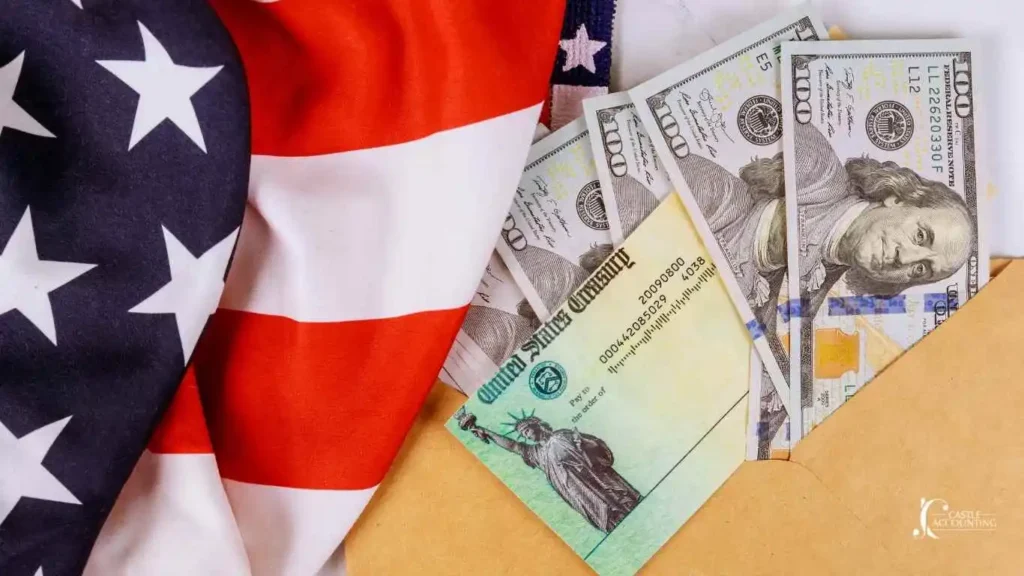Stimulus Check 2025: Who Qualifies and When Will It Arrive?
Economic uncertainty is a big challenge for American families. Many are wondering if they’ll get federal relief payments. Knowing who qualifies helps you plan your finances. Many people want to know who qualifies for a stimulus check and when the money will arrive.
This guide answers your top questions about economic relief programs. You’ll learn what makes you eligible for a payment. Clear information about distribution schedules helps you get ready for help.
Different programs offer financial support in various ways. Each has its own rules and how payments are made. Our detailed guide gives you the latest, accurate info to help you plan your finances.
Stimulus Check 2025 : What’s Happening Now
The 2025 relief discussions have sparked questions like “is there a stimulus check for 2025?” and whether federal or state payments will roll out soon. Many Americans, especially those on fixed incomes, are following updates on the stimulus check 2025 SSI program to see if they qualify. At the same time, headlines about a $2000 stimulus check 2025, a $5000 stimulus check 2025, and the much-discussed $2,000 direct deposit in July 2025 have fueled speculation. While nothing is guaranteed yet, staying aware of both federal and state efforts can help you prepare.
Federal lawmakers continue debating new programs, and states like California are stepping in with their own solutions. The possibility of a new stimulus check 2025 remains tied to how the economy performs, so keeping an eye on official IRS updates is the best way to track and claim the benefits when applications open.

Federal Stimulus Initiatives for 2025
Discussions about federal stimulus payments are ongoing but uncertain. Proposed bills are moving through committees, but none are approved yet. The question is there another stimulus check at the federal level depends on the economy and politics.
Current federal plans focus on specific groups, like low-income families and people above 70 years old. The amounts proposed vary widely among different bills.
The Treasury Department watches economic indicators for more relief. Inflation, unemployment, and spending data guide federal decisions. They might also use administrative actions for economic help.
What States Are Doing to Help
Some states are stepping up while people keep asking “is there another stimulus check 2025?” California’s programs, including the California stimulus check 2025, have already sent relief to millions. New York has also expanded aid, while other states look at targeted measures for low- and middle-income families.
Eligibility rules differ by location. For example, some states let residents automatically qualify, while others require you to claim stimulus check 2025 through an application. Many families especially Social Security recipients are hopeful for a dedicated social security, which could provide extra support on top of federal efforts.
Complete Stimulus Check 2025 Eligibility Requirements
The stimulus check eligibility requirements for 2025 are clear. They help decide who gets a payment and how much. Knowing these rules helps people figure out if they’ll get a payment before it’s sent out.
Many things affect if you get a payment. It depends on your income, filing status, and dependents. The IRS uses these to decide if you get a payment and how much.
Income Limits and Thresholds
Adjusted Gross Income (AGI) limits are key for getting a stimulus check in 2025. If you’re single and make up to $75,000, you get the full amount. Payments start to go down at $75,001 and stop at $99,000.
For married couples filing together, the rules are different. You get the full payment if you make up to $150,000. Payments start to go down at $150,001 and stop at $198,000.
Those filing as head of household get a middle ground. You get the full payment if you make up to $112,500. Payments start to go down at $112,501 and stop at $136,500.
Tax Filing Status Requirements
Your tax filing status matters for stimulus checks. The IRS has five main statuses, with different rules for each. Most people fall into single, married filing jointly, or head of household.
- Single filers are unmarried people without dependents. They have lower income limits than others. Divorced or legally separated people usually file as single for stimulus checks.
- Married filing jointly means you and your spouse combine your income and deductions. This status has the highest income limits for stimulus payments 2025. Both spouses must be U.S. citizens or residents to qualify.
- Married filing separately has its own challenges. Each spouse is treated individually based on their income. This often means lower payments than filing jointly.

Qualifying Children and Adult Dependents
Qualifying children must meet certain tests for stimulus checks in 2025. They must be your son, daughter, stepchild, foster child, brother, sister, or descendant. They must be under 17 at the end of the tax year. Also they must live with you for more than half the year. Temporary absences for education, medical care, or military service don’t count against them. They can’t provide more than half of their own support during the year.
Support tests for adult dependents require you to provide more than half of their support. For details on claiming adult children, see this guide on dependents. This includes housing, food, medical care, education, and other necessary expenses. Proper documentation is important for IRS reviews.
Step-by-Step Guide to Check Your Qualification Status
To check if you’re eligible for a stimulus check, you need certain tax documents. Follow a simple process to find out if you qualify before payments start.
Make sure to pay close attention to your tax details. This will help you know for sure if you’re eligible.
Gather Required Tax Documents
First, get your latest tax return, usually from 2023. This is key for checking if you qualify for a stimulus check. Also, collect your W-2 forms from all jobs you had last year. If you’re self-employed, gather your 1099 forms and Schedule C.
You’ll also need bank statements, records of investment income, and any unemployment benefits. Keep these documents ready and easy to find.
Calculate Your Adjusted Gross Income
Your Adjusted Gross Income (AGI) is important for figuring out if you get a check and how much. Look at line 11 on your Form 1040 for your AGI.
If you haven’t filed your 2023 taxes yet, estimate your AGI. Use your total income minus deductions. Include all income types and deductions.
Then, subtract any adjustments like student loan interest and retirement contributions. This affects if you qualify for a stimulus check.
Check your filing status
Your filing status changes how much you might get and if you qualify. Common statuses are single, married filing jointly, and head of household.
Life changes like marriage or divorce can change your status. Make sure your status matches your current situation. Confirm your filing status is correct. This ensures you’re assessed correctly for your eligibility.
Use Official Eligibility Tools
The IRS has online tools to check if you qualify without sharing personal info. These tools give you the latest on your status. Go to the IRS website and find the stimulus payment section. Use your Social Security number, birthdate, and address to see if you qualify.
State tax agencies also have tools for state relief programs. These official sites give the most accurate info on your eligibility. Contact us for accurate, secure guidance you can trust.

New York Stimulus Payment Eligibility 2025
New York stimulus payment eligibility depends on your income. If you’re single and make less than $75,000, or if you’re married and make less than $150,000, you might qualify.
To qualify, you must live in New York full-time for the whole year. Certain jobs, like being a healthcare worker or teacher, might get you more money. Small businesses with fewer than 50 employees also have their own rules.
To apply, you need to fill out Form IT-272 and provide some documents. If you’re eligible, you could get $500 to $1,200. New york stimulus payment eligibility also helps those who lost their jobs during the pandemic.
California Middle Class Tax Refund Program
California is helping middle-income families with a refund program. The program is automatic and based on income. If you make between $30,000 and $75,000 as a single person, you could get a big refund.
The program uses 2022 tax returns to figure out payments. Married couples filing jointly with incomes between $60,000 and $150,000 get the most. You must have filed your taxes by October 2023 to get the money automatically.
Payments range from $200 to $1,050, depending on your income and filing status. The state sends the money through direct deposit or checks, based on your preference. Families with kids under 17 get extra money.
stimulus check eligibility : Extra Relief by State
Massachusetts has a Premium Pay Program for essential workers. Workers who kept their jobs during the pandemic can get $500 to $2,000. Healthcare workers and grocery store employees get the most.
Connecticut offers tax relief to those with incomes under $100,000 for singles and $200,000 for couples. The state calculates rebates based on 2022 taxes, with payments from $75 to $300. No application is needed for those who qualify.
Colorado’s Cash Back program gives a flat payment to all eligible residents. Single people get $750, and couples get $1,500, no matter their income. You must live in Colorado and file your taxes on time to qualify.
| State | Maximum Income Limit | Payment Range | Application Required |
|---|---|---|---|
| New York | $75,000 (Single) / $150,000 (Joint) | $500 – $1,200 | Yes |
| California | $75,000 (Single) / $150,000 (Joint) | $200 – $1,050 | No |
| Massachusetts | Varies by sector | $500 – $2,000 | Yes |
| Connecticut | $100,000 (Single) / $200,000 (Joint) | $75 – $300 | No |
Many states, like Maine, Vermont, and Delaware, are also helping out in 2025. These programs often help working families, essential workers, or those facing economic challenges. Check your state’s tax website for the latest on these programs and who can apply.
Payment Amounts and Calculation Methods
Everyone gets a base payment. But, if you make more money, you might get less. People who earn more get less money until they don’t get anything. If you have dependents, you might get more money for them.
Base Payment Structure
The $1400 stimulus check 2025 is the starting amount for eligible people. If you’re single and make less than $75,000, you get the full amount. Couples who file together and make under $150,000 also get the full amount.
People who file as head of household get the full $1400 if they make less than $112,500. These are the starting points where you might get less money. If you’re under these limits, you get the full payment.
Income-Based Payment Reductions
For every $100 you make over the limits, you lose $5. Single people lose their payment at $80,000. Couples lose theirs at $160,000 in combined income.
Head of household filers lose their payment at $120,000. The same formula applies to everyone. You can figure out how much less you’ll get by seeing how much over the limit you are.
For example, if you’re single and make $77,000, you get $1,300. This is because you’re $2,000 over the limit, and you lose $100 for every $100 over.
Dependent Payment Calculations
Dependents add $1,400 to your payment. Children under 17 qualify automatically. Adult dependents might also qualify under certain conditions.
Dependent payments can really add up. A couple with two kids could get up to $5,600. These payments also get reduced based on income, just like the base payments.
To qualify for dependent payments, the person must be on your tax return. They must also live with you and depend on you financially. Each dependent adds $1,400 to your total payment before any income reductions.

Payment Timeline and Distribution Schedule
Knowing when your stimulus check eligibility payments 2025 will come is key to managing your money. Many agencies work together to send out payments to millions. Each way of getting your money has its own time frame.
Federal Payment Release Dates
Federal stimulus payments usually start 2-3 weeks after a bill is passed. The IRS sends out payments in batches, based on your tax info. Direct deposit recipients get their money first, often in the first wave.
Payments from the federal government take 8-12 weeks to roll out. The IRS focuses on those who filed recent returns with direct deposit info, especially if they’re also expecting tax refunds in 2025. Those who get paper checks have to wait longer because of printing and mailing.
The IRS sends out payments on certain days each week. Most often, this is on Wednesdays and Fridays. This gives banks time to process the money before the weekend.
State Program Distribution Timelines
State relief programs work on their own schedules, separate from federal ones. Each state decides its own timeline based on funding and how quickly they can process payments. California’s Middle Class Tax Refund usually takes 4-6 weeks to process.
New York’s programs often send out payments faster than other states. Their advanced systems help speed up the process. Most New Yorkers get their money in 3-4 weeks after they qualify.
Smaller states might take longer to send out payments because of fewer resources. But, with fewer people to pay, they can process payments faster. The time it takes for state payments to arrive varies a lot, depending on the state and the program.
Payment Method Options
Most programs let you choose between direct deposit and paper checks. Direct deposit is the fastest way to get your money. Paper checks are an option for those without bank accounts.
Choosing how you get your money affects both how fast it arrives and how safe it is. Direct deposit is safer because it reduces the chance of lost or stolen checks. It also avoids worries about mail delays or changes in address.
How to Apply and Receive Your Stimulus Payment
To get your stimulus payment, you need to know the process. It depends on your tax history and current situation. Most people get their payments automatically, but some need to take action.
Your stimulus check eligibility decides how you get your payment. The government uses different ways to send money to everyone who qualifies.
Automatic Payment Process
The IRS sends payments to most people automatically. This is for those who filed taxes in 2023 or 2024 and meet income rules.
Automatic payments usually arrive in two to three weeks after the payment is announced. The IRS uses your direct deposit info or mailing address from your tax return.
If your stimulus check eligibility is confirmed through taxes, you don’t need to do anything. The payment will come the same way as your tax refund.
- Direct deposit payments arrive first
- Paper checks follow within 4-6 weeks
- Debit cards are sent to specific addresses
Manual Application Requirements
Some groups must apply for stimulus payments themselves. This includes people who haven’t filed taxes recently.
Non-filers need to use the IRS Non-Filers tool to apply. This online tool asks for basic info to check if you qualify.
Even if you qualify for federal payments, you might need to apply separately for state programs. Each state has its own application and rules.
- Visit the official IRS Non-Filers portal
- Provide Social Security number and basic information
- Include bank account details for direct deposit
- Submit dependent information if applicable
- Wait for confirmation email
Required documents for applying include a photo ID, Social Security cards for family members, and bank account info. If you don’t have an SSN, you may need to apply using a W-7 form.
Updating Payment Information
You can change your payment details on the IRS Get My Payment portal. This lets you update direct deposit info and mailing addresses.
Changes must be made before the payment is processed to work. Once processing starts, you can’t change payment info for that round.
Your stimulus check eligibility doesn’t change when you update payment info. Only the delivery method can be changed through this system.
- Log into Get My Payment with personal information
- Verify identity using tax return data
- Enter new bank account or address details
- Confirm changes before submission
Important timing: Updates take 5-7 business days to process before they affect new payments.
Troubleshooting Common Issues
Missing payments are a common problem. Several reasons can cause delays or failures in payment delivery.
Checks are returned if the address is wrong or outdated. The IRS tries to deliver it again before you need to contact them.
Incorrect payment amounts often happen because of outdated income info or changes in dependents. You need to call the IRS customer service for these issues.
| Common Problem | Likely Cause | Solution Steps |
|---|---|---|
| Payment not received | Outdated banking information | Check Get My Payment portal status |
| Wrong payment amount | Income or dependent changes | File amended tax return if needed |
| Check returned to IRS | Incorrect mailing address | Update address through IRS tools |
| Eligibility questions | Complex tax situations | Contact IRS helpline directly |
For state program issues, contact the state tax authority handling the program. Each state has its own customer service for their programs.
Conclusion
Stimulus programs are always changing. Whether you get a check depends on your income, location, and tax status.
Stay updated by checking government sites and filing your taxes on time. Some state programs start fast and end quickly, so don’t miss out.
Also, keep your tax documents ready. Many programs give money on a first-come, first-served basis.
Need help checking if you qualify or updating your info? Contact us for clear and accurate guidance.
FAQ
Is there another stimulus check coming in 2025?
No federal stimulus check has been confirmed for 2025 yet. But, some states are starting their own relief programs. The federal government keeps an eye on the economy. If Congress acts, and the economy stays good, there might be stimulus checks in 2025. Keep up with the IRS and your state’s tax office for the latest news.
What are the income limits for stimulus check eligibility in 2025?
To get a stimulus check, you must meet income rules. For federal checks, people making up to $75,000 and couples up to $150,000 get the full amount. But, if you make more, you might get less or nothing at all. State programs, like New York’s, might have different rules.
Who qualifies for the $1400 stimulus check 2025?
To get the $1400 check, you need to meet income and residency rules. You must be a U.S. citizen or resident, have filed taxes, and meet income limits. Your dependents might also get money, depending on their age and your relationship to them.
How do I check if I’m eligible for stimulus payments?
To see if you qualify, gather your tax return and income info. Use the IRS’s tools or your state’s calculator. You can also check the IRS or your state’s website for more details.
What is the New York stimulus payment eligibility rules?
In New York, you need to live there, meet income limits, and possibly be an essential worker. The state’s tax office sets these rules. Check their website for more information.
When will stimulus payments be distributed in 2025?
Payment times vary. Federal payments take 1-3 days for direct deposit and 6-8 weeks for checks. State programs have their own schedules. Some send payments automatically, while others need you to apply.
Do I need to apply for stimulus payments or are they automatic?
Most payments are automatic from tax info. But, some need manual applications. This includes non-filers, those with changed situations, or state program recipients. Check with the IRS and your state for what you need to do.
How much money will I receive from stimulus programs?
Payment amounts vary based on income, filing status, and dependents. You might get $1400, plus more for dependents. But, if you earn too much, you might get less or nothing.
What should I do if I don’t receive my stimulus payment?
If you’re missing a payment, first check if you qualify. Make sure your payment info is up to date with the IRS or your state. Use official tracking tools and contact your tax authority if problems continue. Keep all records and communications.
Can I update my banking information for direct deposit?
Yes, you can update your banking info on the IRS or your state’s website. This speeds up your payment. Update your info early to avoid delays or returned payments.
Are stimulus payments taxable income?
Federal stimulus payments are not taxable and don’t need to be reported. But, state programs might be different. Talk to a tax expert or check the IRS and your state’s guidance for tax info.
What documents do I need to verify my stimulus check eligibility?
You’ll need your tax return, Social Security card, ID, and proof of income or dependent status. For state programs, you might need more documents. Keep everything organized and ready during the application or verification process.

